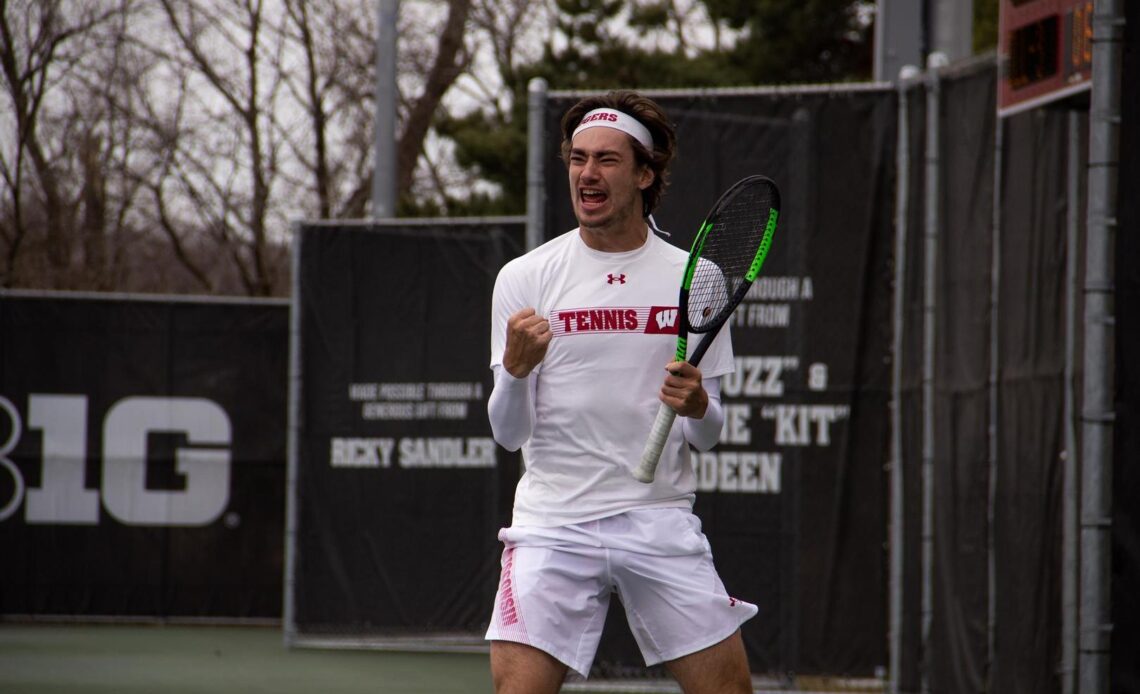BY ANDY BAGGOT
UWBadgers.com Insider
MADISON, Wis. — You could sit for hours watching Jared Pratt do his thing on behalf of the Wisconsin men’s tennis team and not notice his immense handicap.
“When I recruited him I had no idea he had this issue,” UW coach Danny Westerman said. “You’d never be able to tell at the level he’s playing at.”
Pratt has gone from blue-chip national recruit in 2018 to the No. 1 singles player for the Badgers in 2023 despite experiencing some level of pain every practice, every conditioning session and every one of his nearly 200 career matches.
There have been occasions where playing the sport he’s loved since he was 5 has brought him to tears. There have been times where the discomfort has triggered thoughts of calling it quits.
“The issues that I have with my back can present in many different ways,” Pratt said. “I can have direct pain in my back, which is common. I’ve learned to live with it. If it’s bad on game day, you take some Advil, you roll it out and do the best you can.
“My back is usually hurting. If you see me on or near a tennis court, it’s usually in a little bit of discomfort. But I’m used to it.”
Pratt was 8, living in Middleton, when he was diagnosed with scoliosis – curvature of the spine – during a routine wellness exam. He spent the ensuing three years wearing a hard plastic brace covering his torso while he slept in the hope it would address the condition.
But after Pratt and his parents, Diane and Philip, moved to Charleston, S.C., he experienced a growth spurt between 10 and 13 that made the problem worse. When another exam measured the curve at 40 degrees, it was decided that fusion surgery was needed.
The procedure typically lasts four to six hours. It involves removing the joints between the vertebrae to loosen them up. The vertebrae are then roughened up so that the body responds by producing new bone. The new bone eventually bridges the gaps between the vertebrae and makes them fuse together. Metal implants – rods, screws, hooks or wires – are put in to hold the spine still while the vertebrae fuse.
Pratt had two rods inserted and his spine was fused from the T-2 (thoracic) vertebrae to the L-2 (lumbar) vertebrae a year before he entered high school. According to his mother, a decision was made to halt the fusion process at the L-2 vertebrae, which would afford him…
Click Here to Read the Full Original Article at Wisconsin Badgers…

